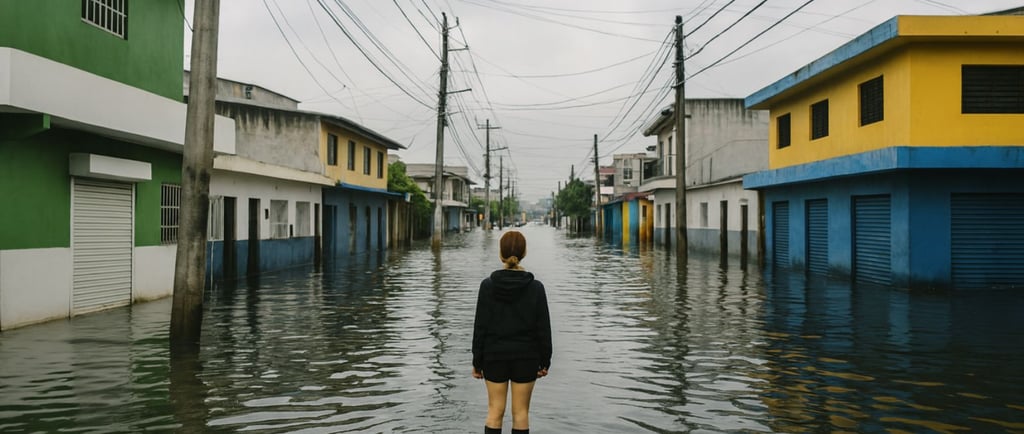500,000+ People Face Water Disruptions as Tropical Storm Melissa Floods Santo Domingo; Up to 20 Inches of Rain Forecast
11/11/20251 min read


Street-level flooding in Santo Domingo is a real-time stress test of urban drainage and coastal defenses. With up to 20 inches (~500 mm) of rain forecast for parts of Jamaica and Haiti, and at least 3 deaths already reported in Haiti, the human and economic stakes are immediate. Higher adaptation capex today can shave future disaster losses and insurance volatility.
Reuters’ Pictures of the Day captured vehicles and pedestrians wading through floodwater in the Dominican capital as Tropical Storm Melissa stalled in the north-central Caribbean. The storm held at ~45 mph (72 km/h) maximum sustained winds and drifted at ~2 mph (3 km/h)—a worst-case combo that wrings out rain over the same terrain. Officials have opened shelters, closed schools and some government offices, and reported flooding to ~200 homes, while water-system damage has disrupted service for 500,000+ people.
The National Hurricane Center guidance, cited by major outlets, flags rapid intensification; Bloomberg reports Melissa could reach Category 4 by Monday, with Jamaica and southern Hispaniola in the crosshairs. Slow movers like Melissa stack risks—river overflow, landslides, and storm surge—onto already fragile infrastructure and tight fiscal space, especially in Haiti.
Track actual rainfall totals against NHC guidance to gauge the gap between serious flooding and catastrophic landslides; monitor power and water restoration times in Santo Domingo, since prolonged outages raise public-health costs; and watch for any track shift toward Jamaica or Haiti as intensification accelerates through the weekend.
Melissa is a numbers story: 500,000+ with disrupted water service, ~200 homes flooded, 3 confirmed deaths, 20 inches of rain possible—and a glide path to Cat-4. For cities across the Caribbean, the lesson is blunt: finance drainage, slope stabilization and coastal defenses now, or pay more later in claims, outages and GDP hits when the next slow-moving storm parks overhead.
Earthian AI
Earthian AI is the Earth-focused risk intelligence engine headquartered in the Netherlands with international offices in Munich, Germany, and Paris, France.
hello@earthianai.com
© 2025. All rights reserved.
Netherlands
Munich: Josephspitalstraße 15, Bavaria 80331, DE
Enschede: De Hems 10, 7522NL, NL (Mailing)
Tel: +31 641 19 16 81
Germany
Amsterdam: Rokin 92, 1012KZ, NL
Tel: +49 160 978 38 013
France
Station F
Paris: 5 parvis Alan Turing, 75013 Paris, France
